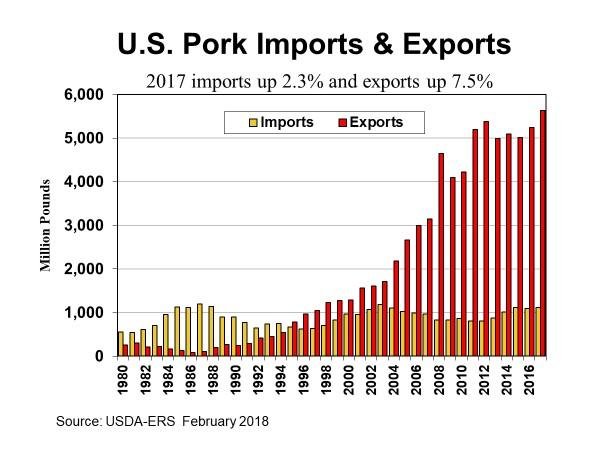Forecasting the future of the U.S. pork industry requires piecing together volatile signals: fluctuating demand, tightening margins, technological leaps—plus consumer attitudes evolving by increments and, sometimes, by leaps and bounds. Last year’s persistent financial duress left an indelible impression on producers; few will soon forget those average losses per head hovering near historically bad levels for two years straight.
Shrinking sow numbers have been offset by a surprising trend: sow productivity is nonetheless rising. Improved genetics and cutting-edge feeding technology, now commonplace among major producers, push efficiency metrics higher than ever before—despite a modestly contracting breeding base in some regions where consolidation hasn’t yet erased smaller operations completely.
Yet profitability’s recent return (only faint signs of which flickered through early winter) prompts caution rather than celebration among veteran stakeholders; none assume stable prosperity is imminent when market volatility lingers at every turn.
Export markets buoy prices for now but are shadowed by political uncertainty and fresh tariffs looming just over the horizon. Should these frictions increase further or global economies stumble unexpectedly (as has happened before), forecasts suggest domestic consumption could become even more crucial to overall stability—and perhaps even growth—in coming years.
U.S. per capita pork consumption remains almost static these days, while Canada actually noted a decline in recent seasons—a curious detail that diverges from generally strong international demand increases elsewhere across the globe. In response to such idiosyncrasies in buyer behavior domestically versus overseas, industry thought leaders often emphasize innovation targeting local palates first; products aligning with today’s brisker lifestyles gain traction more readily than traditional cuts alone can support.
Adapting product portfolios mustn’t distract attention from formidable structural changes shaping pork production itself though—for instance: contract farming models grow ever-more prevalent as integrators deepen control over herds and supply chains alike, which sometimes disquiets independent operators while appealing to multinationals seeking vertical integration advantages.
Advances in biotechnology echo throughout sectoral roundtables with increasing regularity—as gene editing tools mature rapidly enough that formerly theoretical gains start translating into subtle but measurable on-farm improvements already this cycle (indeed some say adoption rates surpass even conservative internal corporate estimates). Of note too are precision agriculture technologies like animal monitoring sensors or automated feeders drawing actionable insights via artificial intelligence assimilation of real-time data flows; both improve herd health outcomes while freeing labor resources for other pressing operational needs not yet addressed adequately through automation alone—or perhaps never will be fully so resolved despite enthusiastic predictions about robots taking over swine barns wholesale someday soonish.
But emphasizing welfare—whether out of regulatory necessity or ethics-driven branding goals—is equally pronounced within strategic discussions lately: disease prevention measures intensify each year not only due to mounting scrutiny but also as insurance against devastating outbreaks seen recently both at home and abroad (even if risk managers occasionally underestimate just how quickly virulent strains might jump biosecurity lines).
Oddly enough though despite all these newfangled management paradigms gaining ascendancy there persists something faintly old-fashioned around community traditions embedded within generational pig farms—not least because seemingly paradoxical patterns emerge between heavy investment capacity wielded by conglomerates versus continued attempts at artisanal differentiation among nimble independents operating closer to niche regional markets where storytelling arguably counts nearly as much as carcass yields do by strict arithmetic calculation… although it’s difficult to precisely separate cause from effect given overlapping trends influencing purchasing behaviors simultaneously nowadays!
For sustainability advocates championing environmental remediation efforts inside a heavily scrutinized livestock footprint landscape—it shouldn’t go unnoticed how practices like reduced antimicrobial usage intersect right alongside advances in reproductive nutrition science under broader umbrella frameworks spanning circular economy aspirations (though admittedly some initiatives appear divergent depending upon whose metric one uses).
Overall anticipated total 2025 commercial production hovers near 28 billion pounds—a slight contraction compared to prior annual projections perhaps signaling ongoing herd rationalization rather than inexorable expansion phase returning overnight—but whether this proves entirely accurate is open for later revision should export shocks upset present surmises regarding equilibrium pricing formulas long term.
Leaders converging around consensus opinions cite core priorities repeatedly:
- Elevate value proposition via product innovation attuned closely to youth demographic habits
- Sustain throughput gains leveraging precision feeding
- Mitigate reliance upon fragile human workforce pipelines through incremental mechanization
- Build resilient supply networks responsive both upstream genetic shifts & downstream consumer dynamics
One distinctive feature? Amidst cautious optimism seeps wariness about repeating mistakes made during earlier boom periods when slack discipline eroded competitive positioning temporarily—it’d be ironic if historical amnesia resurfaced so soon after painful correction cycles that everyone plans never again repeating though best-laid intentions don’t always hold up unbroken under profit pressure waves that seem inevitable given cyclicality endemic here.
Change governs everything except nostalgia—which lingers longer on many family farmstead porches than boardrooms would generally realize!

